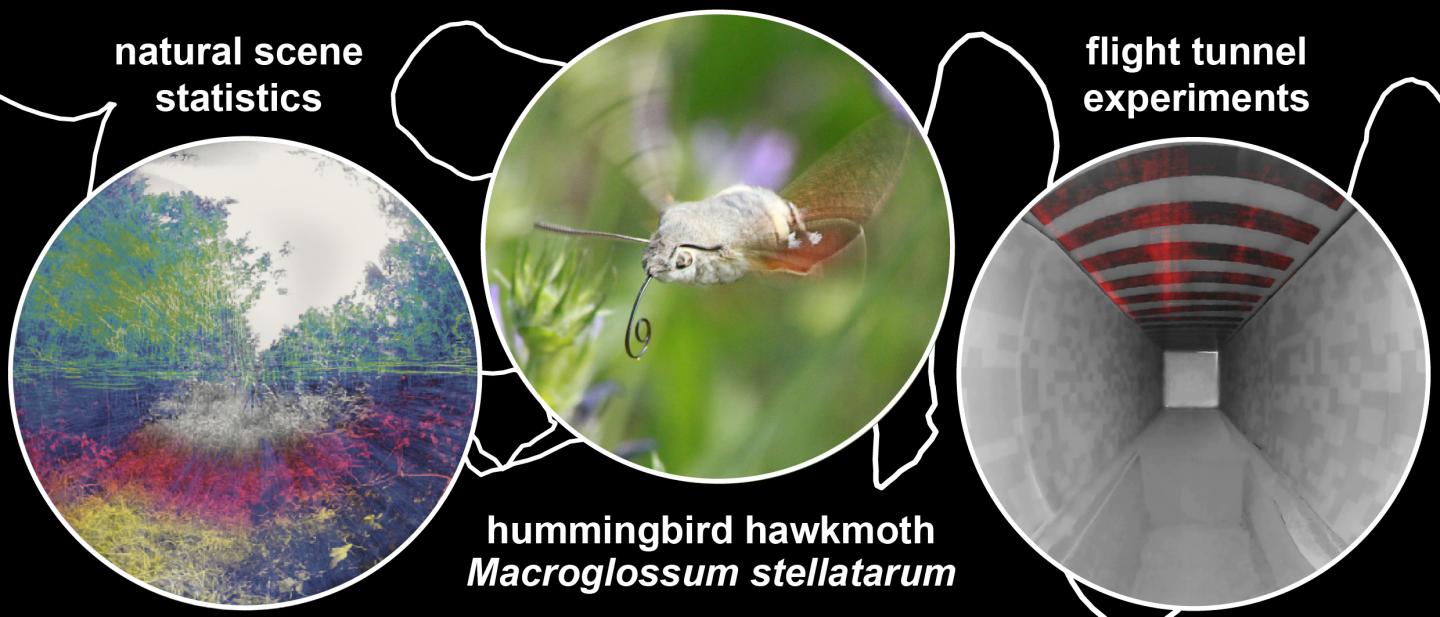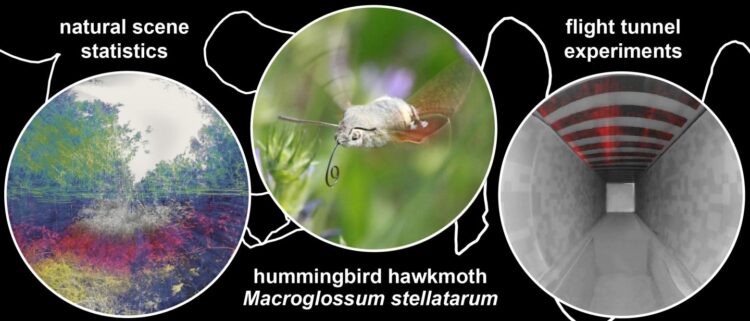
Credit: (Image: Anna Stoeckl / University of Wuerzburg)
Hummingbird hawkmoths are small insects that hover in the air like hummingbirds when drinking nectar from flowers. Dr. Anna Stöckl from the Biocentre of the Julius-Maximilians-Universität (JMU) Würzburg in Bavaria, Germany, is studying the visual performance of these insects. Dr. Stöckl and her doctoral student Ronja Bigge now present their latest findings in the journal Current Biology.
“To control their flight, hummingbird hawkmoths rely on optic flow in the lower half of their visual field,” Ronja Bigge explains. Optic flow is the relative motion that the surrounding image casts on the animals’ retinas when they fly. We experience this phenomenon ourselves when travelling by train – the landscape passing by the train windows allows us to estimate our speed, for example.
For hawkmoths, the optic flow also provides information about their own movement. It helps them to control the straightness and speed of their flight. The JMU researchers have now shown with outdoor measurements that the optic flow components parallel to the direction of flight are always strongest below the hawkmoths’ body. This is where the insects see meadows, gardens and streets that provide a varied texture. For flight control, what happens in the lower visual field is therefore the most reliable parameter.
Previously unknown behaviour discovered
“Surprisingly, we were able to show that the hawkmoths displayed a completely different and novel behaviour when we presented them with visual textures in the upper half of their visual field,” says Anna Stöckl.
The animals then oriented themselves along prominent contours in the patterns. Thus, they did not use the visual information for flight control, but for orientation – although the visual patterns were exactly the same as the ones that were previously presented in the lower half of their visual field.
“Our optical measurements in natural habitats showed a comparable relationship: high-contrast structures that can be used for orientation occur primarily in the upper half of the visual field,” says the JMU researcher. These are, for example, the silhouettes of treetops or bushes that form a strong contrast with the sky.
Visual field is divided in two
The conclusion of the Würzburg biologists: “The flight control system and the orientation system of the hummingbird hawkmoth divide the visual field among themselves and focus on the respective area that provides the most reliable information in their natural habitats.”
In other words, it is not only important what the animals see, but also where they see it.
###
Media Contact
Dr. Anna Stoeckl
[email protected]
Original Source
https:/
Related Journal Article
http://dx.





